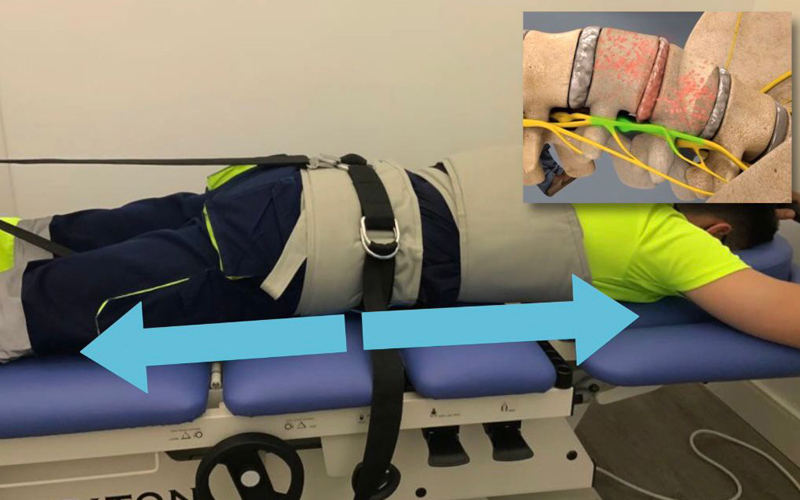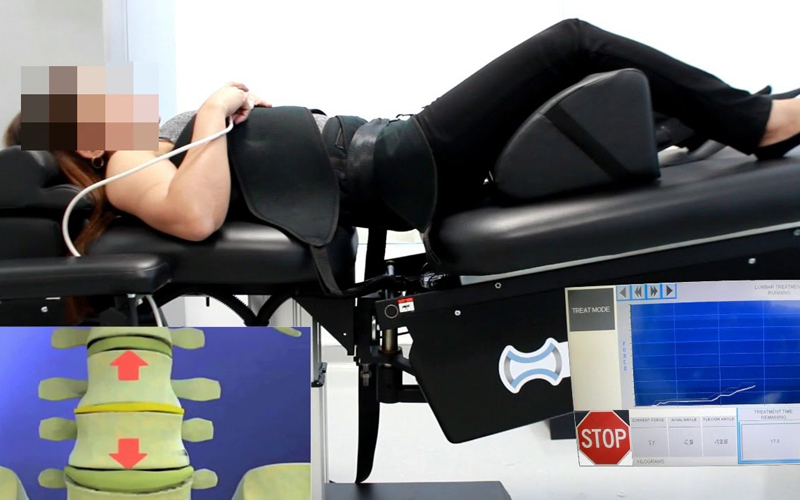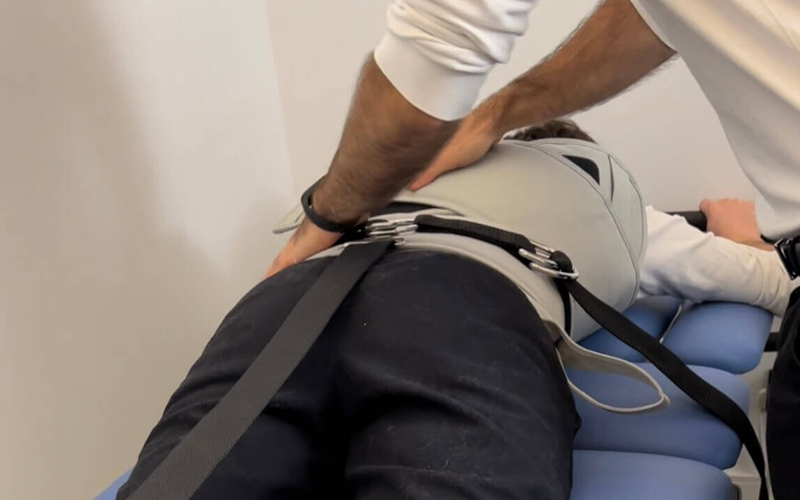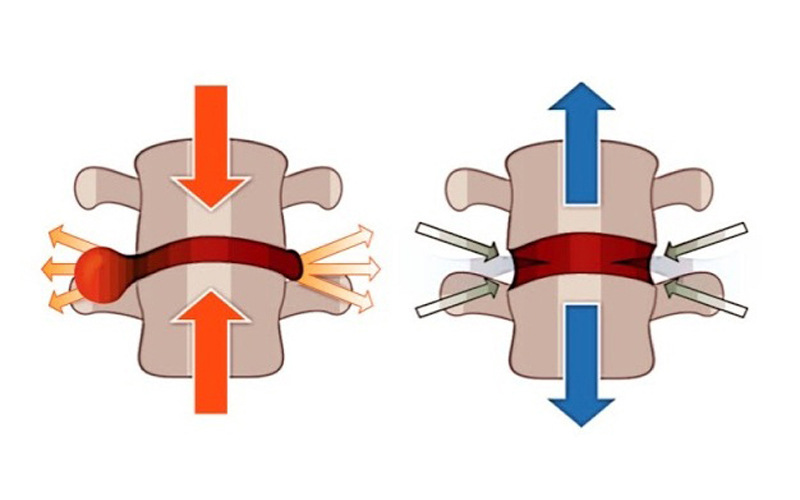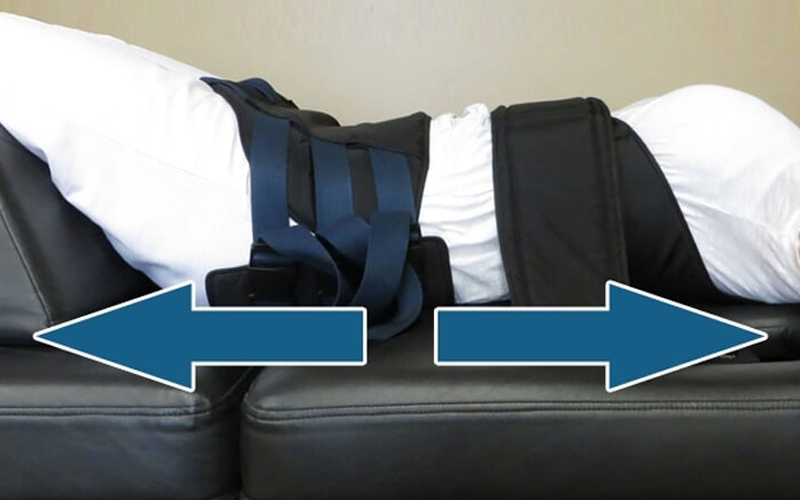What is Vertebral Axial Decompression?
It is a very new and highly specific technology that focuses fundamentally on applying a combination of traction, decompression and distractions to the spinal column, both at cervical and lumbar level. The process is carried out thanks to a fully computerised spinal traction table that contains harnesses, belts and a pulley, all connected to a computer with a motor that carries out the whole process.
What are the benefits of Spinal Traction?
The main effect on the spinal column is to decompress the vertebral discs, increasing their height, creating a vacuum or negative pressure that increases the space between the discs and helps to achieve multiple benefits in the patient’s body:
- It allows the herniated disc to move back into place.
- It facilitates the repositioning of the nucleus pulposus.
- It increases the height of the spine.
- It allows better nutrition and oxygenation of the disc.
- Improves cell metabolism.
- Helps to rehydrate the disc more easily.
- Stretches ligaments, tendons and muscles.
- Relaxes the periaticular tissue structures.
- It causes a decrease in pain and an increase in well-being.
- Reduces nerve root irritation.
For which treatment is it ideal?
Practically any pathology related to the spine and its structures can be treated with this type of therapy. Some of the injuries that can benefit greatly from this type of treatment are:
- Hernias and vertebral disc protrusions.
- Vertebral disc degeneration.
- Loss of disc height and / or vertebrae.
- Facet lesions, loss of vertebral height or vertebral wedging.
- Radiculopathies of cervical and/or lumbar origin: sciatica, carpal tunnel syndrome, etc.
- Cervical and/or lumbar spine disorders: cervical pain, shoulder-elbow-wrist pain, lumbago, hip-knee-ankle pain.
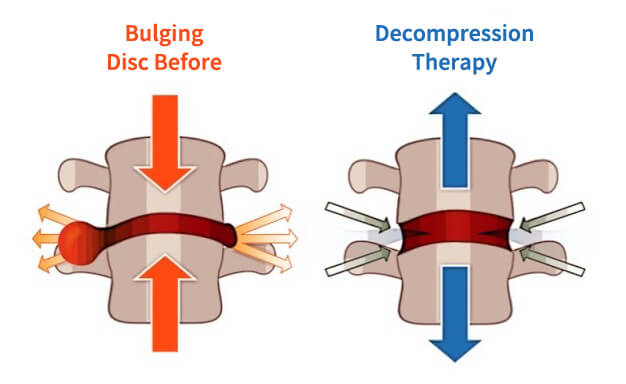
Spinal Traction for Sciatica
Sciatica can benefit enormously from the benefits of vertebral axial decompression, since by affecting the spinal column, the irritation of the nerve root of the sciatic nerve is reduced, its nutrition-oxygenation and metabolism is improved, achieving normalisation of nerve function and reducing symptoms.
Spinal Traction for Hernias
Both at cervical and lumbar level, vertebral axial decompression can help in the early and good recovery of herniated discs. This type of technology allows the spinal column to be tractioned, decompressing it and increasing its height, providing the herniated vertebral disc with an ideal environment for recovery. By tractioning and increasing the height, the herniated disc can return to its place and thus stop putting pressure on the nerve root, reducing the symptoms quickly.
Benefit from this special PROMOTION and SAVE 60€ by booking now
What is Non-Surgical Spinal Traction?
Spinal traction is one of the most successful treatments that can target the spinal disc herniation, sciatica or back pain in a safe and effective way without surgery. The spinal traction therapy table uses an amount of your body weight to pull on the spine. Through our computerised system we can perform a rhythmic cycle of traction determined by your individual condition with specific angles increasing through monitored progress. This allows for the internal reduction of pressure on the spine, letting hydration and vital nutrients back into the disc space, which is crucial to allow healing to take place. Therefore, with this specific therapy we can begin healing the cellular damage from previous injuries. The resulting easing of spinal pressure creates the right environment for continued healing, even after the treatment time has ended.
Our spinal traction therapy tables are highly innovative and with the specific settings each individual patient’s needs can be targeted effectively. Years of back problems can be reversed with our specific treatment plans.
As disc problems are commonly found within the lower back (lumbar) or neck (cervical) regions, our spinal traction table allows for the machine to be used on either area.
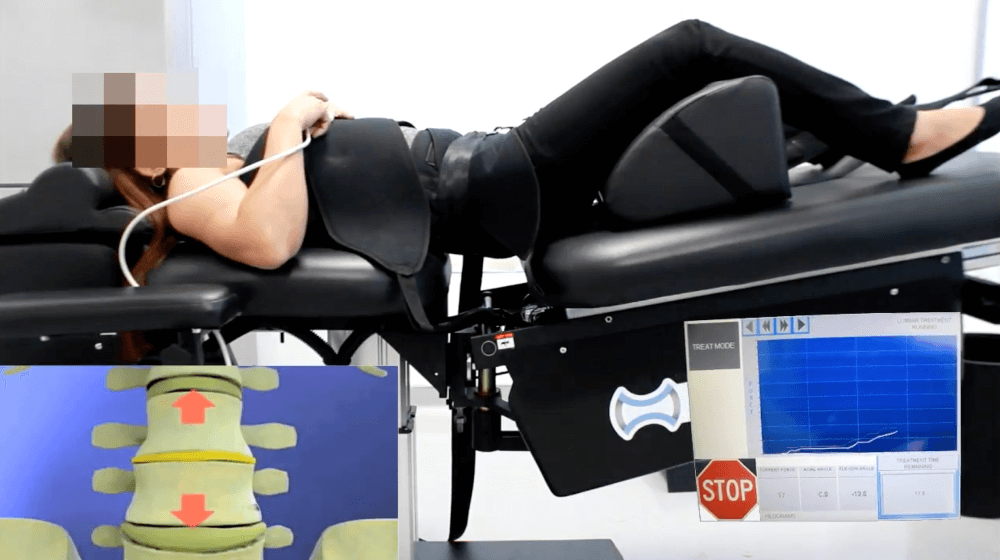
What can Spinal Traction Therapy treat?
Spinal Traction Therapy can very effectively treat a number of back and nerve conditions, including:
- Herniated or Bulging Discs
- Sciatica (leg pain)
- Pinched Nerves
- Degenerative Joint Disease / Arthritis
- Chronic Neck Pain or Back Pain
- Spinal Stenosis
In the past, a patient suffering from disc problems was usually given pain medications, instructed to refrain from physical activities, referred for physical therapy, and when they weren’t progressing they were sent for spinal surgery. Conservative care proved very helpful in many cases, yet there have been some cases when surgery seemed to be the only other option.
Spinal Traction Therapy not only significantly reduces back pain in many patients, but also enables the majority of patients to return to more active lifestyles.
How Does Spinal Traction Help Degenerating Discs?
Spinal traction applies a comfortable traction on your spine, which creates a negative pressure. The negative pressure makes a vacuum within the disc space, causing fluid, minerals and nutrients to re-enter the disc space. This creates the ideal healing environment for the discs, which are then able to repair and rehydrate over time.
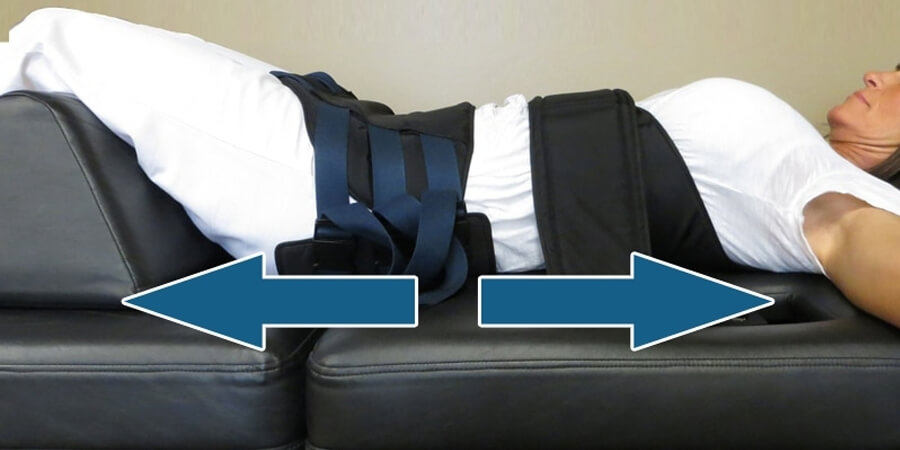
Will Spinal Traction Work for Me?
A Spinal examination will help us determine if Spinal Traction therapy is the most specific and effective treatment option for you. If you suffer from Sciatica or a Spinal Disc Herniation the Spinal Traction treatment may be the best therapy for you.
At Madrid Health we have a range of treatment options available and can create a specific plan to help you in the shortest time possible.
What is the Typical Treatment Schedule?
Most studies are based on 20 to 24 spinal traction treatments. But, a typical course of spinal traction at Madrid Health involves 10-20 treatments around four to six weeks. If a plan is purchased we include all accessories with the treatment, e.g. spinal cushions, exercise videos etc..
Pain relief may happen at any stage during that time, with some feeling instant relief after just the first session, while for others it can take around six to feel the benefit. Depending on what we find during the initial examination, spinal traction may be even more effective when combined with our other therapies.


